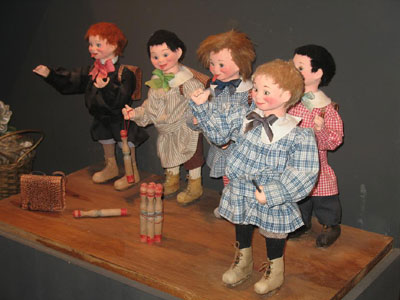
Unique in Europe, this collection of automata and mechanical toys from the 18th to the 20th centuries is mainly from the Roullet-Decamps workshops.
Opened in 1987, the museum houses an impressive collection of automata. Lovers of history, art and technology will be delighted by this visit, which allows them to explore the evolution of these mechanical objects over the centuries.
The museum tour begins with a look back at the history of automata and the first models created.
These were mainly used to entertain and amaze spectators at parties and banquets. Throughout the rooms, you can admire automata from different eras, including
18th-century automata: often made of wood, they are characterized by their great finesse and precision.
19th-century automata: this period saw the emergence of more complex and sophisticated steam-powered automata.
Automata from the early 20th century: these are now made of metal, with electric mechanisms making their appearance.
Mid-20th-century automata: mass production begins, and techniques and materials diversify.
Throughout this historical immersion, we also discover the trades that contributed to the development of automata, such as mechanics, sculptors and markers.
The museum's mission is to preserve and restore these mechanical treasures. A restoration workshop is set up on site, where visitors can observe the meticulous work carried out by craftsmen to bring these objets d'art back to life. The Musée de l'Automate attaches great importance to preserving this unique heritage and passing on the know-how associated with this mechanical art.
At the Musée de l'Automate in Souillac, a number of temporary exhibitions enrich the permanent collection and enable visitors to explore different themes relating to automata. These include
Advertising automata: used to promote products or brands, they are often highly creative and original.
Window automata: designed to liven up storefronts, they have left their mark on the history of commerce and fashion.
Scientific automata: designed to reproduce natural phenomena or explain scientific principles, they were used in cabinets of curiosities and at world's fairs.
These temporary exhibitions reveal the many facets of the world of automata and their role in society over the centuries.
Musée de l’automate
Translated with DeepL.com
(free version)





